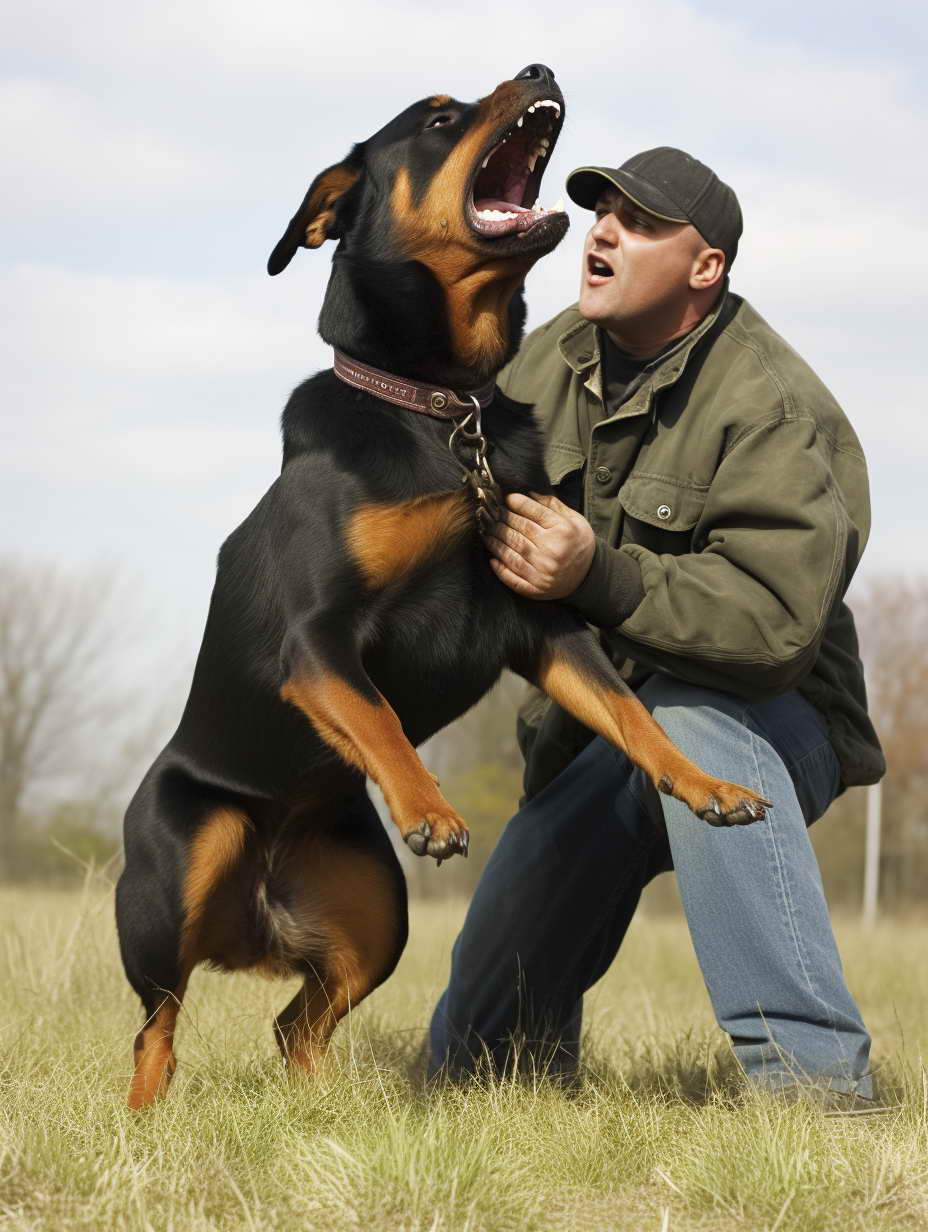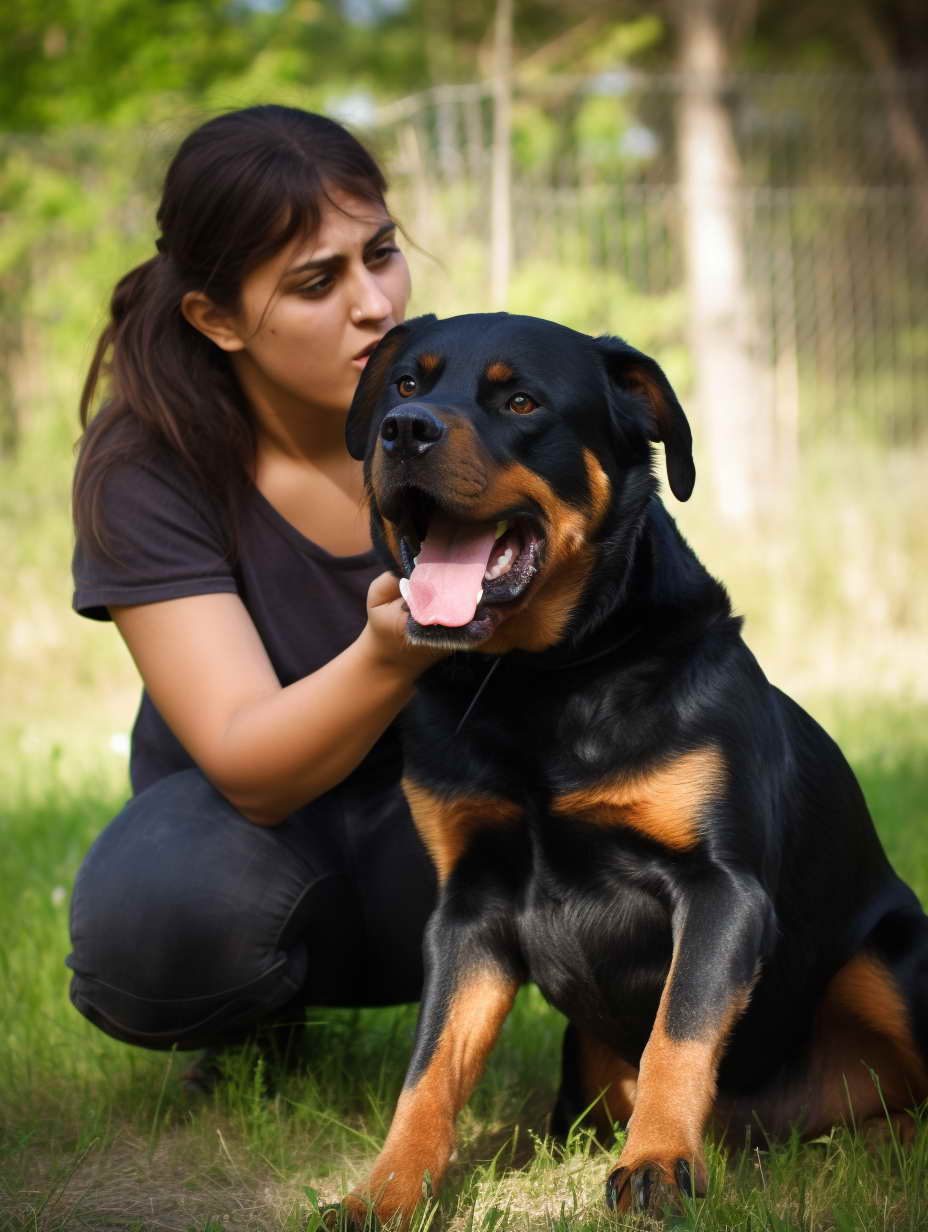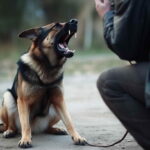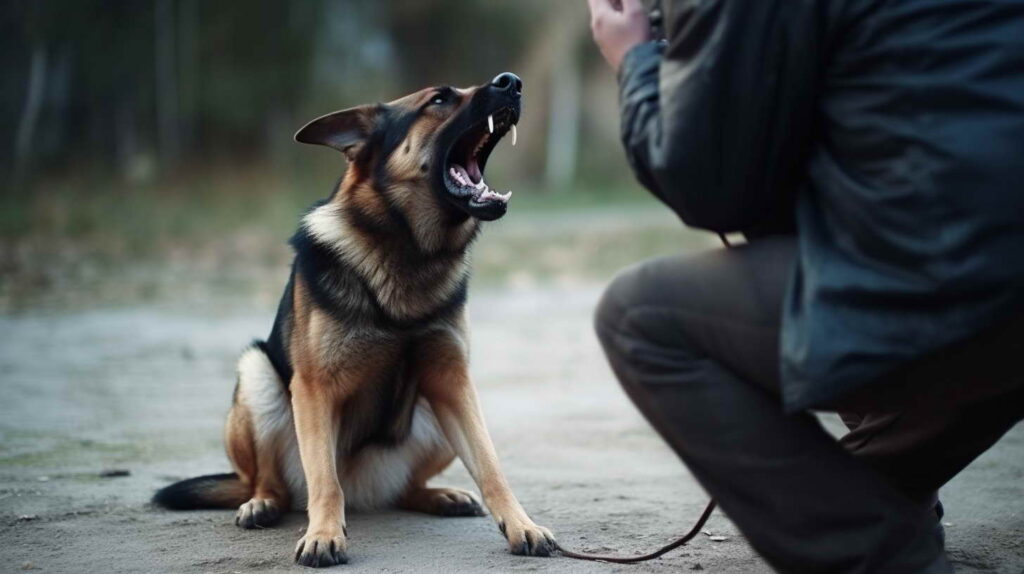Aggressive Dogs Training Tips: A Comprehensive Guide
Aggressive behavior in dogs can be a daunting challenge for pet owners. Whether your dog exhibits aggression towards people, other animals, or even objects, it’s crucial to address and correct this behavior for everyone’s safety. In this comprehensive guide, we will delve into Aggressive Dogs Training Tips to help you foster a harmonious relationship with your canine companion.
Aggressive Dogs Training Tips: Understanding the Basics
Training an aggressive dog starts with a solid understanding of the underlying causes and triggers behind their aggressive behavior. This knowledge will serve as the foundation upon which you can develop effective training strategies. Let’s delve deeper into the fundamentals of understanding and addressing aggression in dogs.
The Psychology of Aggression
Aggression in dogs can stem from various psychological factors, and it’s essential to recognize and address these root causes. Here are some key psychological aspects to consider:
Fear-Based Aggression
Fear is a powerful motivator for aggressive behavior in dogs. They may lash out when they feel threatened or anxious. Understanding what triggers fear in your dog is crucial for effective training. It could be unfamiliar people, other animals, or specific situations.
Territorial Aggression
Dogs are naturally territorial creatures. They may become aggressive when they perceive a threat to their territory, whether it’s your home or their favorite spot in the park. Recognizing these triggers and teaching your dog to share space is essential.
Past Trauma
Dogs with a history of abuse or traumatic experiences may exhibit aggression as a defense mechanism. Patience and gentle training methods are necessary to help them overcome their past and build trust.
Frustration
Sometimes, dogs become aggressive due to frustration, especially when they can’t reach a desired object or engage in a particular behavior. Learning how to manage their frustration and redirect their energy positively is vital.
Signs of Aggressive Behavior
To effectively address aggression, you must be able to recognize the signs. Aggressive behavior in dogs can manifest in various ways, and early identification is key to intervention:
Growling
Growling is often the first warning sign of aggression. It’s a vocal cue that your dog is uncomfortable or unhappy with a situation.
Snapping
If your dog resorts to snapping, it’s a clear indication that they feel threatened and are willing to defend themselves.
Baring Teeth
Baring teeth is an aggressive display that signifies your dog’s readiness to escalate the situation if necessary. It’s a sign of serious discomfort.
Lunging
Lunging is a physical manifestation of aggression, often accompanied by barking. It can be directed at people, animals, or objects perceived as threats.

Establishing Leadership
One of the foundational elements in effectively training an aggressive dog is establishing yourself as the pack leader. Dogs are pack animals by nature, and they respond best to clear, confident, and consistent leadership. Here’s how you can establish yourself as the leader in your dog’s eyes:
Lead by Example
Dogs are highly perceptive and attuned to human emotions and behaviors. To be an effective leader, you must lead by example. This means demonstrating the behavior and demeanor you expect from your dog.
Confidence: Show confidence in your actions and decisions. Dogs are more likely to follow someone who appears self-assured and in control.
Calmness: Maintain a calm demeanor, especially in challenging situations. Dogs can pick up on stress and anxiety, so staying composed is essential to keep your dog relaxed.
Consistency: Be consistent in your interactions with your dog. Use the same commands and expectations each time, so your dog knows what to expect.
Consistency is Key
Consistency is a fundamental principle in dog training, especially when dealing with aggression. Mixed messages can confuse your dog and exacerbate their aggressive behavior. Here’s how to maintain consistency:
Use Clear Commands: Choose clear and concise commands for your dog’s training. Stick to these commands consistently, and ensure that everyone in your household uses the same commands.
Set Rules and Boundaries: Establish clear rules and boundaries for your dog. For example, decide whether your dog is allowed on the furniture or where they should sleep at night. Enforce these rules consistently.
Timing is Crucial: Timing is essential when rewarding or correcting behavior. Reward good behavior immediately, and address undesirable behavior promptly to reinforce the connection between actions and consequences.
Positive Reinforcement
Positive reinforcement is a powerful tool for establishing leadership and training your dog effectively. It involves rewarding your dog for good behavior with treats, praise, or affection. Here’s how to use positive reinforcement:
Reward Good Behavior: Whenever your dog exhibits the desired behavior, immediately reward them. Use treats, verbal praise, or physical affection to reinforce their positive actions.
Consistent Rewards: Be consistent in your rewards. Ensure that your dog associates the correct behavior with positive outcomes consistently.
Avoid Punishment: Avoid using harsh punishments or physical corrections. Positive reinforcement is more effective and helps build a trusting and loving relationship with your dog.

Professional Training Assistance
Addressing aggression in your dog can be a challenging and sensitive process, and there are instances where professional assistance becomes not only beneficial but necessary. Seeking the expertise of a professional dog trainer or behaviorist can greatly enhance your efforts to manage and mitigate your dog’s aggression. Here’s how professional training assistance can be instrumental in your dog’s rehabilitation:
Consult a Trainer
Professional dog trainers specialize in understanding and modifying canine behavior, including aggression. Consulting a trainer can provide you with several advantages:
Expert Assessment: A professional trainer will thoroughly assess your dog’s behavior, pinpoint the underlying causes of aggression, and tailor a training plan to address those specific issues.
Customized Training: Trainers create personalized training programs based on your dog’s unique needs and your goals. They have the experience and knowledge to adapt their methods to suit your dog’s temperament and behavior.
Hands-On Guidance: Professional trainers provide hands-on guidance, demonstrating the correct techniques and behaviors for both you and your dog. This practical instruction ensures that you’re implementing training methods correctly.
Socialization Opportunities: Trainers often conduct group classes where your dog can interact with other dogs in a controlled and supervised environment, helping them improve their social skills.
Group Classes
Group training classes offer a structured and controlled setting for dogs to learn and socialize. Enrolling your aggressive dog in group classes can have several benefits:
Socialization: Interaction with other dogs helps your dog learn appropriate social behaviors, reduce fear and anxiety, and build confidence.
Exposure to Various Situations: Group classes expose your dog to various environments, people, and dogs, helping them adapt to different situations and stimuli.
Professional Supervision: Group classes are typically led by experienced trainers who can address aggressive behaviors in a controlled and safe setting.
In-Home Training
Some professional trainers offer in-home training services, which can be particularly beneficial for aggressive dogs. Here’s how in-home training can help:
Familiar Environment: Training your dog in their familiar surroundings can reduce stress and anxiety, making it easier for them to learn and adapt.
Tailored Solutions: Trainers can identify specific triggers in your home that contribute to your dog’s aggression and develop strategies to manage and mitigate these triggers.
Individualized Attention: In-home training provides one-on-one attention from a professional trainer, allowing for a highly customized and focused training program.
Behaviorist Consultation
In cases of severe aggression or complex behavioral issues, consulting with a veterinary behaviorist may be necessary. Behaviorists are experts in understanding the psychological aspects of canine behavior and can provide advanced intervention:
Comprehensive Evaluation: Behaviorists conduct thorough assessments, often including medical evaluations, to determine the underlying causes of aggression.
Advanced Techniques: Behaviorists have access to a wide range of behavior modification techniques and medications that can help address severe aggression.
Collaboration with Veterinarians: Behaviorists often work closely with veterinarians to rule out medical causes of aggression and develop comprehensive treatment plans.

Socialization: The Key to Overcoming Aggression
Socialization is a crucial aspect of training for any dog, but it takes on added significance when dealing with an aggressive canine. The process of exposing your dog to various people, animals, and situations in a controlled and positive manner is essential for reducing aggression and promoting a well-adjusted and confident pet. Here’s a comprehensive look at the importance of socialization and how to go about it:
Early Exposure
Early socialization is the cornerstone of building a well-adjusted and non-aggressive dog. Puppies are particularly receptive to new experiences between the ages of 3 to 14 weeks. During this critical period, it’s important to expose your puppy to as many different people, animals, environments, and stimuli as possible.
Puppy Classes: Enroll your puppy in puppy socialization classes, where they can interact with other puppies and learn essential social skills.
Exposure to People: Introduce your puppy to various types of people, including children, adults, and individuals with different appearances and voices.
Meeting Other Dogs: Arrange controlled playdates with other puppies or well-behaved adult dogs to teach your puppy appropriate social behavior.
Handling Exercises: Gently handle your puppy’s paws, ears, and body to ensure they become comfortable with touch, reducing the likelihood of aggressive reactions.
Supervised Playdates
As your dog matures, supervised playdates with other dogs continue to be valuable for their social development. These playdates offer several benefits:
Social Skills: Interaction with other dogs helps your dog develop social skills, learn to read canine body language, and communicate effectively.
Bite Inhibition: Play with other dogs teaches bite inhibition—a crucial skill that prevents your dog from causing harm with its mouth.
Energy Release: Playdates provide an outlet for excess energy, reducing the risk of frustration-based aggression.
Positive Experiences: Ensuring that playdates are positive and supervised helps your dog associate other dogs with enjoyable experiences.
Exposure to Different Environments
Varying your dog’s environment is essential for their mental and emotional development. Take your dog to different places, such as parks, beaches, pet-friendly stores, and events. Gradually expose them to new sights, sounds, and smells, ensuring that these experiences are positive and not overwhelming.
Gradual Exposure: Start with less stimulating environments and gradually progress to busier or noisier places.
Positive Reinforcement: Use treats and praise to reward your dog for calm and confident behavior in new environments.
Desensitization: If your dog exhibits fear or anxiety in specific environments, work on desensitizing them by exposing them gradually and rewarding their calmness.
Continued Socialization for Adult Dogs
Even if you missed the early socialization window, it’s never too late to start. Adult dogs can still benefit from socialization efforts, although it may require more patience and gradual exposure.
Slow Introduction: Introduce your adult dog to new experiences, people, and animals at a pace that suits their comfort level.
Professional Guidance: Seek the assistance of a professional dog trainer or behaviorist experienced in working with adult dogs to facilitate the process.
Stay Positive: Maintain a positive attitude and be patient with your dog as they adapt to new situations.
Managing Triggers: Keys to Reducing Aggression
Effectively managing triggers is a crucial component of mitigating aggression in dogs. Triggers are the specific stimuli or situations that provoke aggressive reactions in your canine companion. Identifying and addressing these triggers is essential for creating a safe and harmonious environment for both your dog and those around them. Here’s a comprehensive guide to managing triggers and reducing aggression:
Identify Triggers
The first step in managing triggers is to identify what sets off your dog’s aggressive behavior. Triggers can vary widely from one dog to another, so keen observation is necessary. Common triggers include:
Specific People: Your dog may react aggressively to certain individuals, perhaps due to past negative experiences or unfamiliarity.
Other Animals: Aggression towards other dogs or animals is a common trigger. This can occur on walks, in the home, or at dog parks.
Environmental Factors: Loud noises, unfamiliar surroundings, or certain objects can trigger aggression. For example, thunderstorms, fireworks, or the presence of unfamiliar items in their territory.
Specific Situations: Your dog may exhibit aggression in particular situations, such as during grooming, vet visits, or while eating.
Territorial Aggression: Protecting their territory, such as your home or yard, can trigger aggressive behavior in some dogs.
Avoidance and Management
Once you’ve identified your dog’s triggers, the next step is to implement strategies to manage and minimize exposure to these triggers:
Avoidance: Whenever possible, avoid situations or stimuli that trigger your dog’s aggression. For example, if your dog is aggressive towards other dogs, choose quieter walking routes and avoid busy dog parks.
Controlled Exposure: Gradually expose your dog to its triggers in a controlled and positive manner. This process, known as desensitization and counterconditioning, helps your dog build tolerance and reduces their aggressive response.
Management Tools: Use management tools such as leashes, muzzles, or baby gates to prevent your dog from encountering their triggers until you’ve made significant progress in training.
Professional Guidance
In cases where your dog’s aggression is severe or difficult to manage, seeking professional guidance is crucial:
Trainers and Behaviorists: Professional dog trainers and behaviorists can provide expertise and guidance in managing aggression triggers. They will create a tailored training plan to address your dog’s specific triggers and behavior.
Medication: In some cases, medication prescribed by a veterinarian or veterinary behaviorist may be necessary to help your dog manage their aggression. Medication can reduce anxiety and make training more effective.
Behavior Modification: Behavior modification techniques, under the guidance of a professional, can help desensitize your dog to triggers and reshape their response.
Patience and Consistency
Managing triggers and reducing aggression in your dog requires patience and consistency. It’s important to understand that progress may be gradual, and setbacks can occur. Here’s how to maintain patience and consistency:
Positive Reinforcement: Continue using positive reinforcement to reward calm and non-aggressive behavior.
Training Consistency: Stay consistent with your training techniques and commands, reinforcing the behavior you want to see.
Professional Follow-Up: Regularly consult with your professional trainer or behaviorist for guidance and adjustments to the training plan.
Monitoring Progress: Keep track of your dog’s progress and be prepared to adapt your approach as needed.
Patience and Understanding: Nurturing Your Aggressive Dog’s Transformation
Training an aggressive dog is a journey that demands unwavering patience and a deep well of understanding. The process of addressing and mitigating aggression is neither swift nor linear, and it often presents challenges along the way. Here’s why patience and understanding are essential and how you can apply them in your dog’s rehabilitation:
Avoid Punishment
One of the most critical aspects of patience and understanding is refraining from punishment. Reacting harshly or using punitive methods can exacerbate your dog’s aggression and instill fear. Instead, focus on positive reinforcement to encourage desired behavior. When your dog exhibits aggression triggers, remain calm and composed, and avoid punitive measures.
Acknowledge Progress
Celebrating small victories is a fundamental aspect of training an aggressive dog. Every instance of non-aggressive behavior, even if it’s brief, is a step in the right direction. Recognize and reward these moments with treats and praise. This positive reinforcement encourages your dog to repeat these behaviors.
Learn Your Dog’s Cues
Understanding your dog’s body language and cues is vital for effective training. Aggressive dogs often exhibit signs of discomfort or stress before resorting to aggression. These cues can include flattened ears, dilated pupils, raised hackles, or a stiff body posture. By recognizing these warning signs, you can intervene before aggression escalates and take steps to alleviate your dog’s anxiety.
Seek Veterinary Guidance
In some cases, aggression in dogs may have underlying medical causes, such as pain or illness. Demonstrating understanding means considering the possibility of a medical issue contributing to your dog’s behavior. Consult with a veterinarian to rule out any physical ailments and ensure your dog’s overall health.
Adjust Expectations
It’s important to have realistic expectations when training an aggressive dog. Progress may be slow, and there may be setbacks along the way. Be prepared for both small victories and challenges. Adjust your training plan as needed, but never lose sight of your ultimate goal: a happier, non-aggressive dog.
Stay Consistent
Consistency is a cornerstone of effective dog training. Remain consistent in your commands, rewards, and expectations. Ensure that everyone in your household follows the same training guidelines to avoid confusion for your dog. Consistency provides stability and clarity, which can help your dog feel more secure and less anxious.
Professional Assistance
Sometimes, patience and understanding also mean recognizing when it’s time to seek professional help. If your dog’s aggression is severe, consult with a professional dog trainer or behaviorist. These experts can offer guidance, develop tailored training plans, and provide valuable insights based on their experience. Remember that it’s a sign of understanding and commitment to your dog’s well-being to seek the best possible help when needed.
Unwavering Love and Compassion
Ultimately, patience and understanding are rooted in love and compassion for your furry companion. Remember why you chose to bring a dog into your life—to share love, joy, and companionship. By approaching their aggression with empathy and a genuine desire to help, you can navigate the training journey with your dog in a way that strengthens your bond and nurtures their transformation into a well-behaved and contented pet.
Conclusion
Training an aggressive dog requires dedication, patience, and a deep understanding of your furry friend’s behavior. By following the Aggressive Dogs Training Tips outlined in this guide, you can make significant strides towards transforming your dog into a well-behaved and loving companion.


Leave a Reply